INTRODUCTION
In an interview with Hollywood.com, producer Michael Uslan compared Joel Schumacher's Batman Forever (1995) to the comics, saying:
"Batman Forever, to me, clearly was the Batman from about the mid-1940s till the early 1960s. It was Bill Finger’s scripts of Batman and Robin punching their way through crime through a grotesque gallery of supervillains, jumping across giant typewriters as they battle them."
Screenwriters Lee and Janet Scott Batchler have stated they read the 1939-1940 comics by Bob Kane and Bill Finger, the then contemporary Knightfall story arc, and Frank Miller's The Dark Knight Returns (1986) for inspiration.
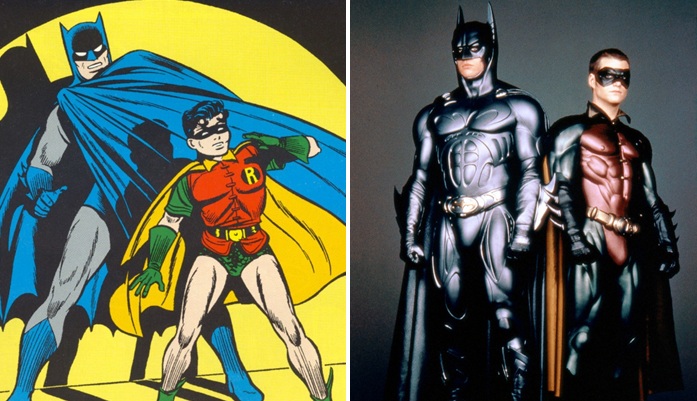
The influence of these stories is clearly evident in the finished film. The movie also has many additional parallels with other comics not cited by the filmmakers. Some of these are doubtless the product of coincidence, but in this feature we're noting as many parallels as possible in order to highlight the consistencies between Schumacher's movie and the source material it adapts.
BATMAN FOREVER AND THE COMICS
As in the comics, the Two-Face in the movie is governed by fate. He uses a coin flip to determine the outcome of important decisions. If the coin lands good side up, the old Harvey will spare his victim. But if it's scarred side up, then the murderous side of his personality gets to take over.
Two-Face's back story in the film is the same as in the comics. He was formerly District Attorney Harvey Dent, scarred in court when crime boss Sal Maroni hurled acid in his face. Batman tried to stop Maroni, but failed to do so in time to help Dent. The physical and psychological scarring resulted in him becoming Two-Face. The flashback in the movie where we see this happen is exactly the same as the original scene from 'The Crimes of Two-Face' (Detective Comics #66, August 1942).
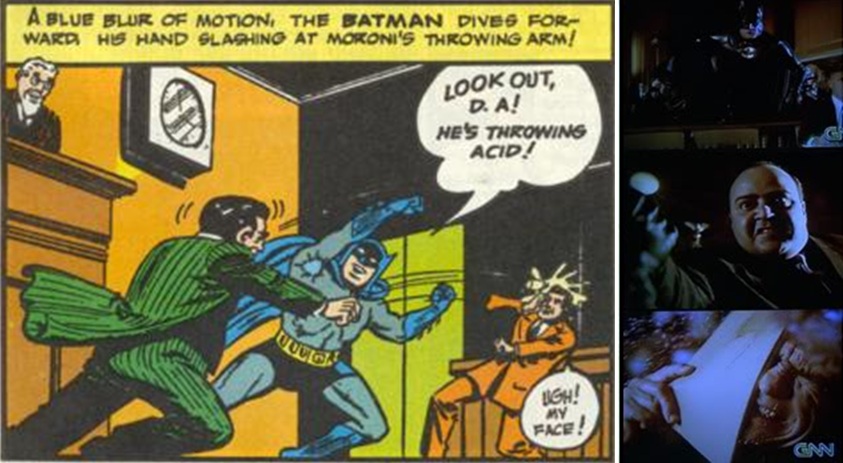
The look of Boss Maroni in the film also matches his appearance in the comics. In this example from 'Free Faces' (Detective Comics #563, June 1986), note how Batman grabs Maroni's arm when he throws the acid, just like he does in the movie and Detective Comics #66.
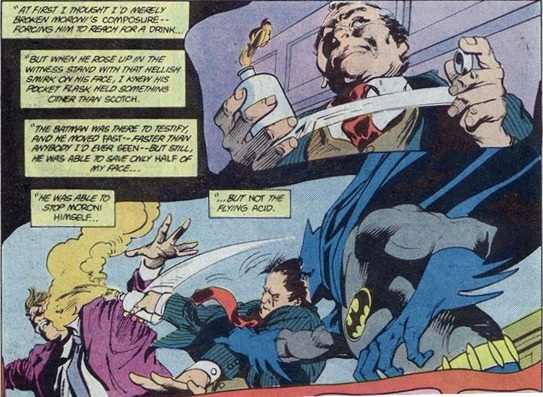
In the Golden Age comics there were actually two Two-Faces. The first was Harvey Kent, who to all intents and purposes was the same as the modern version of Two-Face. Kent was eventually cured, underwent plastic surgery and resumed a happy normal life. He and his wife were even guests at Bruce Wayne and Selina Kyle’s wedding, as were Clark and Lois Kent. This highlighted the flaw of having two major DC universe characters called Kent (the wedding story was even called ‘The Kill Kent Contract!’ and the plot revolved around confusion as to which ‘Kent’ was targeted by the villain).
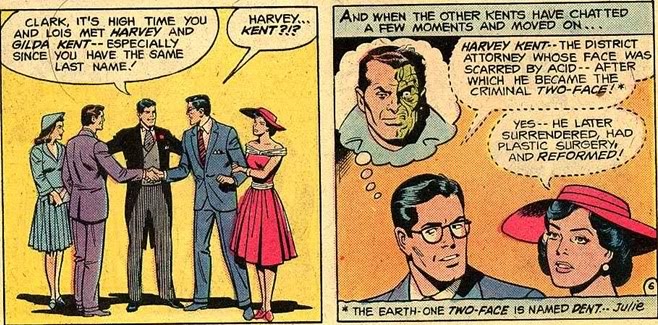
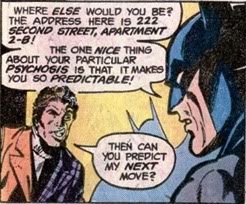 So from the Silver Age onwards Two-Face was renamed Harvey Dent. The second Golden Age Two-Face was Paul Sloane, an actor who sustained a similar injury to Kent and adopted his predecessor’s modus operandi as his own.
So from the Silver Age onwards Two-Face was renamed Harvey Dent. The second Golden Age Two-Face was Paul Sloane, an actor who sustained a similar injury to Kent and adopted his predecessor’s modus operandi as his own.
The movie begins with Two-Face robbing the second bank of Gotham on the second anniversary of the day Batman captured him. The first crime Two-Face ever pulled in the comics was also a bank robbery. He traditionally commits crimes in accordance with a 2-motif. The robbery of the second bank on the second anniversary of his capture is consistent with that pattern.
In 'Eye of the Beholder' (Batman Annual #14, 1990), Two-Face refers to himself in the first person plural. He also does this throughout the movie.

Two-Face’s goons addressing him as "Face" is likely a nod to Frank Miller’s The Dark Knight Returns (1986).
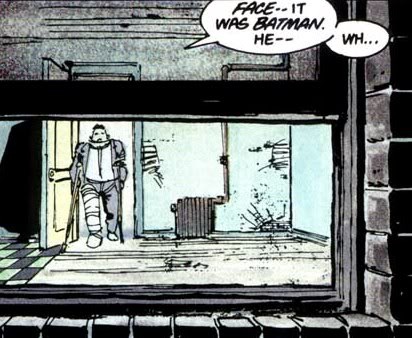
As is the scene of Batman dangling from Two-Face’s helicopter.
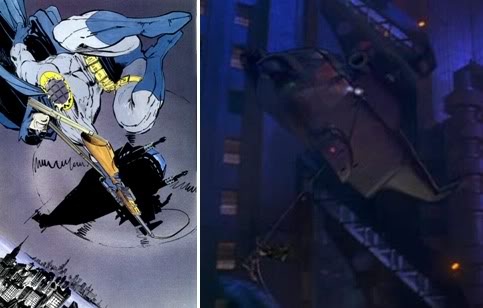
Indeed, even the Batman Forever Official Movie Magazine (p.56) highlights the influence of The Dark Knight Returns on production designer Barbara Ling:
As the one person most responsible for designing the look of Batman Forever, you can bet production designer Barbara Ling read DC Comics' seminal graphic novel The Dark Knight Returns not once, but many times. "The main thing was to pore through the comics before anything happened," Ling says. "That's where Batman comes from, and that's where the look should come from. The comics lay the foundation." It's clear that Batman comics have provided a big inspiration for Batman Forever. Indeed, Lynn Varley's beautiful color washes from The Dark Knight Returns were no small inspiration for Ling and director Joel Schumacher's decision to make this Batman film more color-saturated than the previous two.
The scene of Batman hanging from the helicopter could also be a reference to Marv Wolfman’s Batman: Year Three (1989). This story took place in the wake of Jason Todd’s death and told, via flashbacks, the origin story of Dick Grayson’s Robin. The opening action sequence sees Batman hanging onto a rope attached to a helicopter in an endeavour to capture its occupants. The Helicopter pilot tries to shake him off, at one point attempting to swing him into a tower. The sequence ends with Batman plunging into the waters of Gotham harbour while the villains escape.
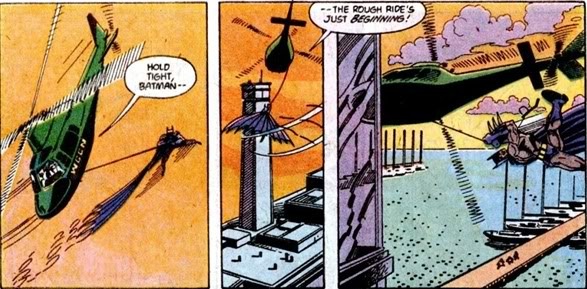
This scene is also visually similar to the cover of ‘Once Beaten, Twice Sly!’ (Batman #314, August 1979).
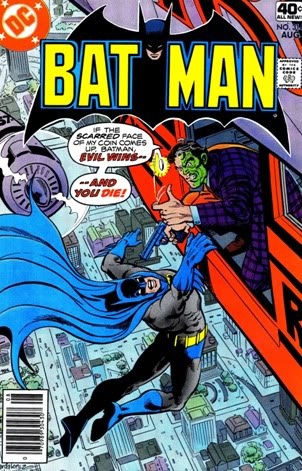
In the film, Two-Face tries to kill Batman by crashing the helicopter into a statue bearing an uncanny resemblance to New York City’s Statue of Liberty. The Gotham City of the comics has been shown to have a similar landmark called ‘The Statue of Freedom’, as seen here in ‘Into the Den of the Death-Dealers!’ (Detective Comics #411, May 1971).
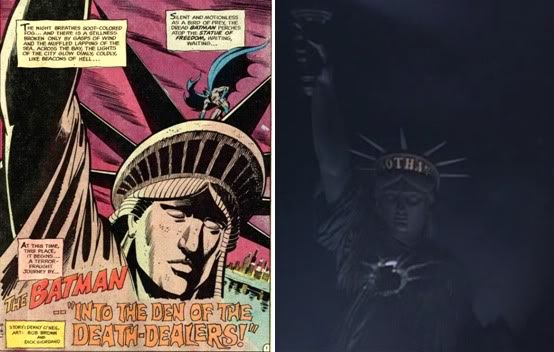
Two-Face's parachute is marked with a red and black yin-yang symbol. This is more or less identical to the emblem on the side of Two-Face's dirigible in Matt Wagner's Batman: Faces (1992).

The next day Bruce Wayne sees the Bat-Signal in the sky while he is at work. He quickly gets to the Batcave using a secret tunnel linked to his office. When Bruce Wayne moved into his penthouse in the seventies comics, he had a secret elevator linked to a subbasement of the Wayne Foundation Tower that served as a secondary Batcave. This may have been the inspiration for the tunnel in the movie.
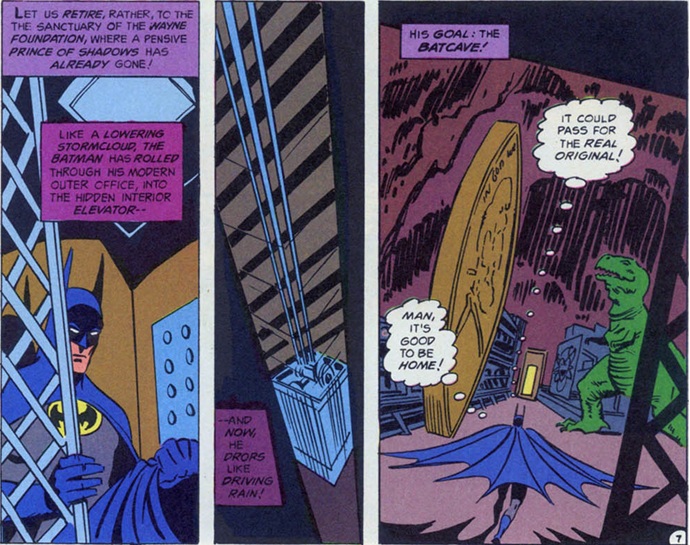
Batman races to police headquarters, only to find that it is Chase who has summoned him. This scenario, where a woman misuses the signal to summon Batman for her own purposes, also happened in ‘Hot House’ (Legends of the Dark Knight #42, February 1993).
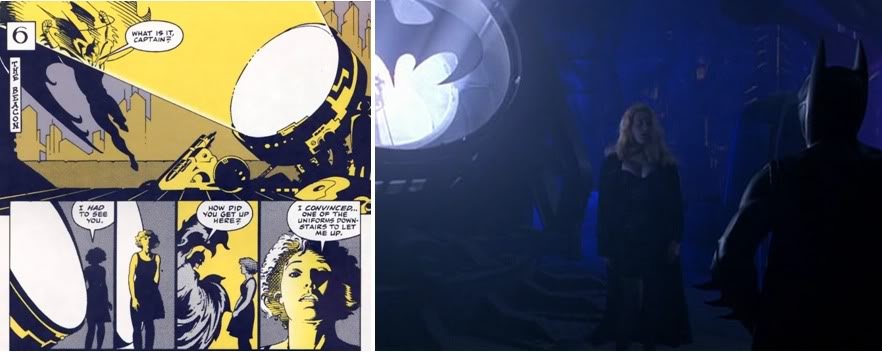
Elsewhere, Edward Nygma is embarking on his own criminal career. His origin story in this movie – revolving around his desire to get revenge against his former employer – is reminiscent of his origin in Batman: The Animated Series, as told in the episode ‘If You’re So Smart, Why Aren’t You Rich?’
Nygma ties up his supervisor, Fred Stickley, using green rope. In the Riddler’s debut story – ‘The Riddler’ (Detective Comics #140, October 1948) – he ties up one of his victims using special puzzle rope.
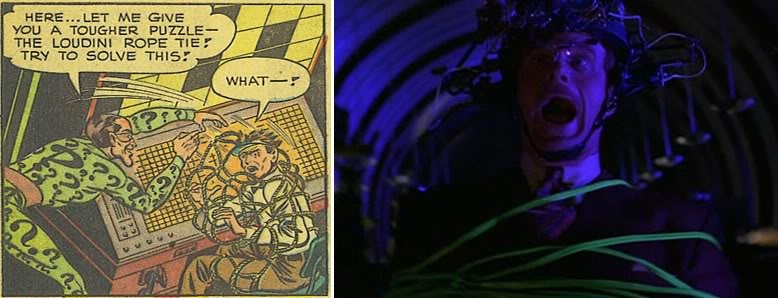
We also hear him say "Riddle me this..." for the first time in this scene. The Riddler in the comics often says this before proposing his latest conundrum.
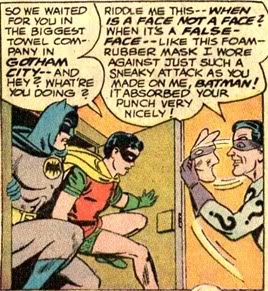
Nygma then proceeds to send Bruce Wayne a series of riddles pieced together from newspaper clippings.
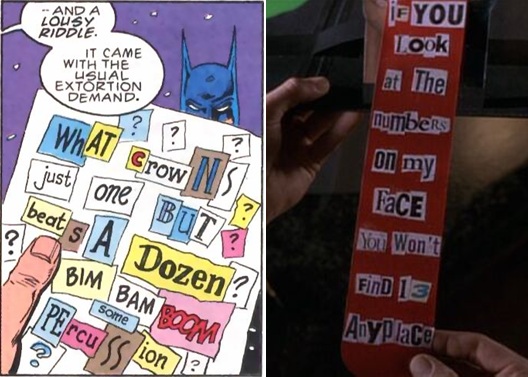
The scene in the circus is a pivotal moment in the movie. The death of the Flying Graysons in the film is closer to the depiction in Batman: Year Three than the original version in ‘Robin the Boy Wonder’ (Detective Comics #38, April 1940).
The costumes of the Flying Graysons look pretty much the same in the comic and the movie. Schumacher added a brother for Dick, but that aside, they’re basically the same as the comic Graysons.
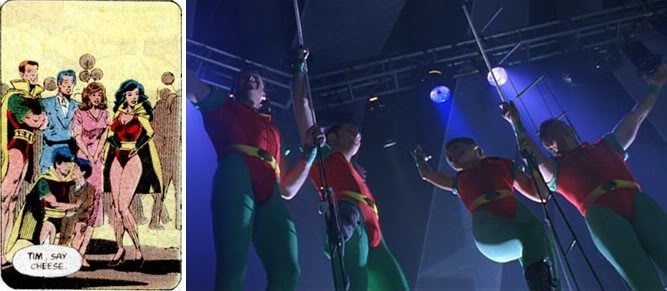
Bruce Wayne and his date are amongst the audience members watching the Flying Graysons’ final performance.
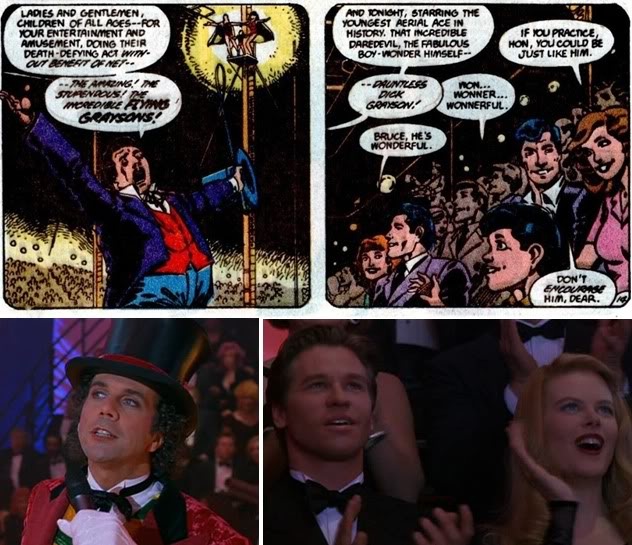
The Ringmaster’s dialogue when he announces their act is similar in both the comic and the movie:
Batman: Year Three:
"Ladies and gentlemen, children of all ages -- for your entertainment and amusement, doing their death-defying act without the benefit of a net -- the amazing! The stupendous! The incredible Flying Graysons!
And tonight, starring the youngest aerial ace in history. That incredible daredevil, the fabulous boy-wonder himself -- dauntless Dick Grayson!"
Batman Forever:
"Ladies and gentlemen. Seventy feet above the ground, performing feats of unimaginable aerial skill, the Flying Graysons!
And now Richard, the youngest Flying Grayson, will perform the awe-inspiring Death Drop! Without the safety of a net!"
In both the comic and the movie, Dick Grayson wows the audience by performing an outstanding acrobatic feat. In the movie this is called 'the awe-inspiring Death Drop', while in Batman: Year Three it was called 'the Quadruple Flip of Doom'.
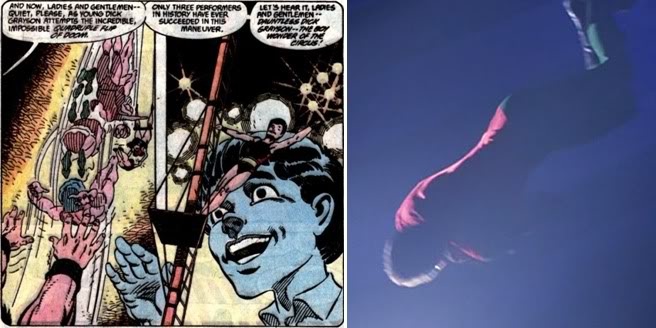
However, in the original script for Batman Forever it was referred to as 'the Quadruple Flying Somersault'.

Two-Face shows up and brings the merriment to an abrupt halt. During the Kent Two-Face’s fourth appearance in ‘The Return of Two-Face!’ (Batman #50, December 1948), he carried out a robbery during a circus performance. Note the ‘two’ theme behind the crime: in this case, stealing the crowns from Siamese twins.
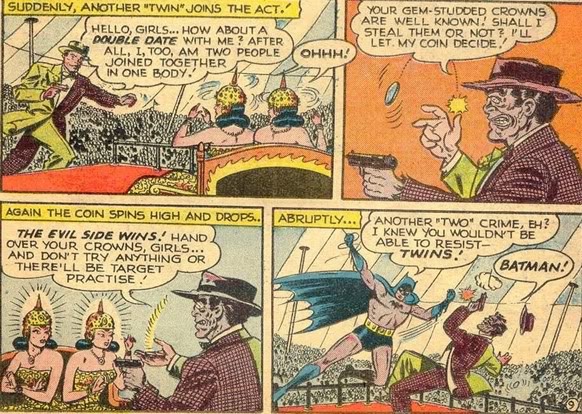
Two-Face pulled off another circus robbery in ‘Two-Face Strikes Again!’ (Batman #81, February 1954). This time the ‘two’ theme was pretty weak – he basically just showed up riding two horses and robbed a clown at gunpoint.

But while Two-Face has a history of ruining circus shows, he wasn’t the one who killed the Graysons in the comics. Traditionally Boss Zucco is the one responsible. One of his goons had sabotaged the wires the Grayson’s were using in their act. And this caused them to fall to their deaths. Aside from the addition of Two-Face, the depiction of their deaths in the film plays out pretty similar to how it does in Batman: Year Three.
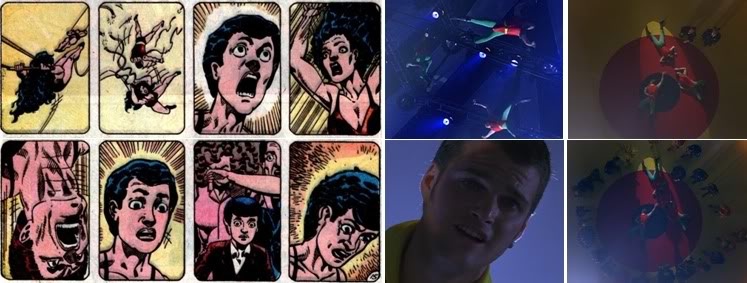
Batman: Year Three makes a big deal of revenge as its central theme, with Batman’s desire to avenge Jason’s death having parallels with Dick’s desire to avenge his parents.
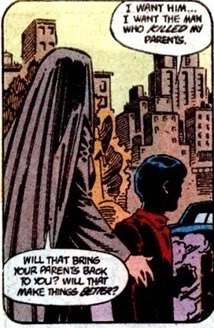
This comic also draws parallels between what happened to Bruce’s parents and the similar fate met by Dick’s family. Bruce is able to relate to his ward’s quest for vengeance in both the comic and the movie.
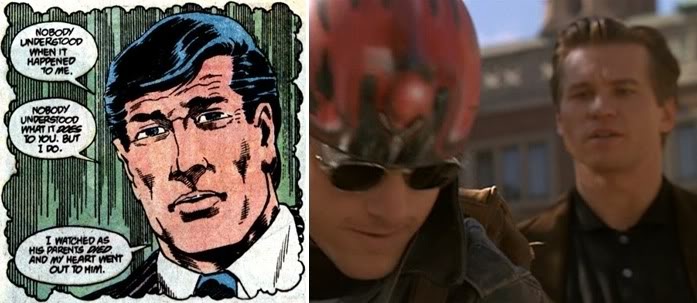
The flashback scene depicting the young Bruce falling down into the cave and cowering in fear as a giant bat flies towards him is adapted directly from The Dark Knight Returns.
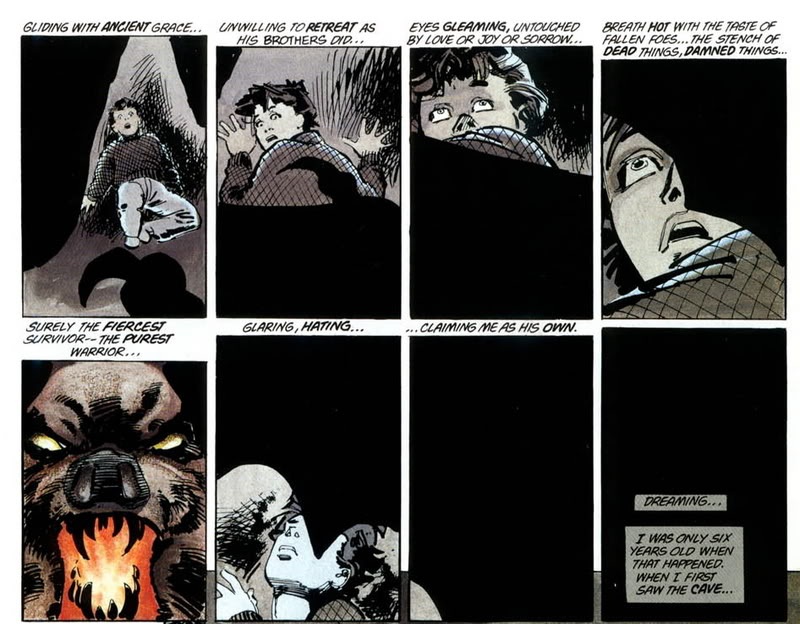
Batman is once again summoned by the Batsignal, only this time it’s a genuine call to arms. A car chase ensues, ending with the controversial scene where Batman drives the Batmobile up a wall to escape Two-Face’s cronies. This is likely a nod to the Adam West TV show, which regularly featured scenes of Batman and Robin walking up vertical walls while a guest star watched them through a window. The Batman comics of the sixties occasionally featured similar scenes.
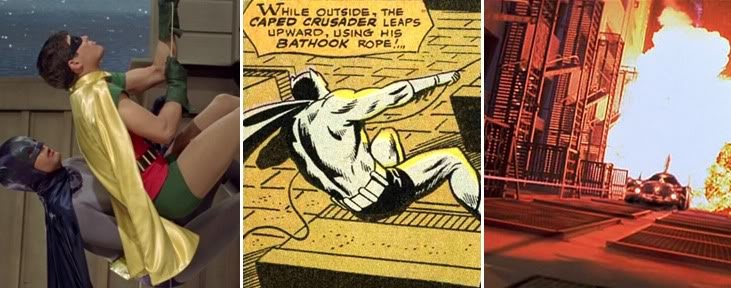
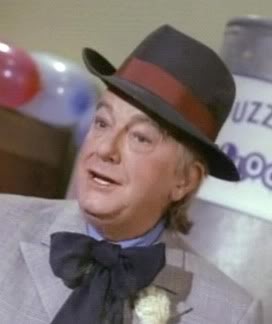 Back at Nygma’s apartment, he tries to concoct an appropriate costumed identity for himself. In doing so he considers several different monikers under which he might operate. These include the Puzzler, the Gamester, Captain Kill and Question Mark Man. Some of these are pre-existing characters
Back at Nygma’s apartment, he tries to concoct an appropriate costumed identity for himself. In doing so he considers several different monikers under which he might operate. These include the Puzzler, the Gamester, Captain Kill and Question Mark Man. Some of these are pre-existing characters
There is a Superman villain called the Puzzler. 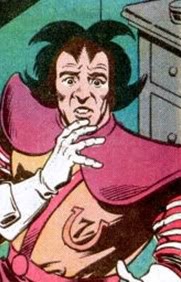 But it’s more likely this is a reference to a similarly-named villain created for the Adam West Batman TV show. During the second season, Riddler actor Frank Gorshin was in a legal dispute with the producers. This left the production crew with several scripts that’d already been written for the Riddler, but no actor to play the role. One of the solutions they came up with was to create a new villain – the Puzzler (played by Maurice Evans, pictured left)) – and rewrite the scripts to accommodate him.
But it’s more likely this is a reference to a similarly-named villain created for the Adam West Batman TV show. During the second season, Riddler actor Frank Gorshin was in a legal dispute with the producers. This left the production crew with several scripts that’d already been written for the Riddler, but no actor to play the role. One of the solutions they came up with was to create a new villain – the Puzzler (played by Maurice Evans, pictured left)) – and rewrite the scripts to accommodate him.
The Gamester (pictured right) is an obscure villain featured in a few Earth-S comics. The use of his name is likely coincidental.
Two-Face’s hideout in the movie features unusual decor where one half is dark, the other light. This goes back to Two-Face’s very first appearance in ‘The Crimes of Two-Face’. He’d have similar hideouts in later stories.
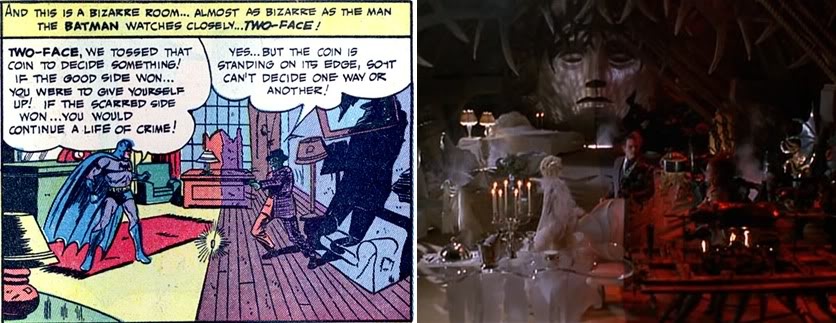
It is here that the Riddler makes his costumed debut. The version in this movie is nary seen without his question-mark cane. The Riddler cane first appeared in the Adam West Batman TV show. Specifically the second season episode ‘Batman’s Anniversary’ featuring John Astin as the Riddler. As mentioned earlier, Frank Gorshin took a break from the show during its second season. While some of the Riddler scripts were rewritten to accommodate different characters, two episodes were produced with Astin standing in for Gorshin. Astin’s Riddler was the first to wield the question-mark cane.
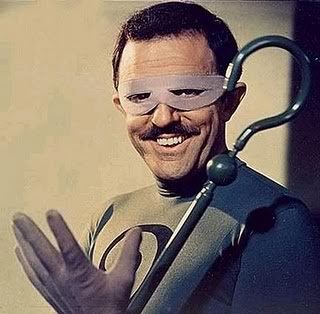
A deleted scene from the movie sees Bruce Wayne destroy a punching bag with one kick. Bruce has been shown to destroy punching bags in the comics in a similar fashion.

In the Introduction of the Batman Forever Official Movie Magazine (p. 2) Chris O'Donnell more or less confirms that Robin in the movie has elements of Jason Todd and Tim Drake.
"The writers encouraged me to do some research, so I went back and read all the comics (best homework assignment I ever had!). I discovered that Robin had a much richer and more complicated history than I had thought. Batman has actually had three partners. [...] Obviously, there could be only one Robin in the movie, but which one? After much deliberation, Joel [Schumacher] and the writers had narrowed it down to the original, Dick Grayson, but they incorporated elements of the other two to make him more contemporary."
In the movie, Schumacher portrays Two-Face as the one who killed Dick Grayson's parents, whereas in the comics it was Boss Zucco who had them murdered. However, in the Post-Crisis canon Two-Face was responsible for the murder of Willis Todd, the father of the second Robin, Jason Todd. When Jason finds out about this in 'Second Chance' (Batman #411, September 1987) he is furious at Batman for keeping the identity of his father's killer secret from him.
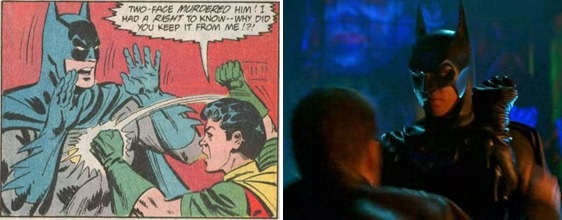
Batman then has to explain to Robin the hazards of pursuing revenge over justice. In later stories, Jason would struggle against his urge to kill Two-Face. The Robin in Schumacher's movie undergoes the same internal struggle when he comes face to face with his parents' killer.
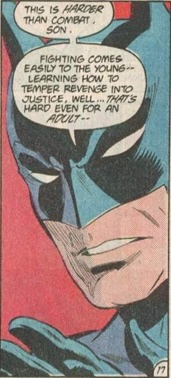
Two-Face's impromptu appearance at Nygma's party is similar to a robbery he pulled in 'Double Image' (Detective Comics #580, November 1987). In both the comic and the movie, Two-Face crashes a party being thrown on the top floor of a fashionable downtown building. He tells the guests to remain calm while his henchmen go amongst them collecting their valuables.
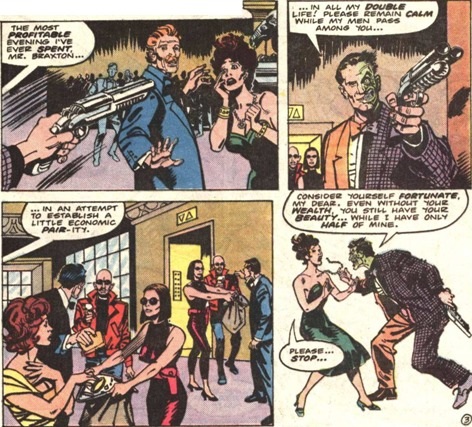
Then Batman shows up, dropping down through the skylighted ceiling and attacking Two-Face's henchmen. In both stories, Two-Face manages to make a clean getaway.
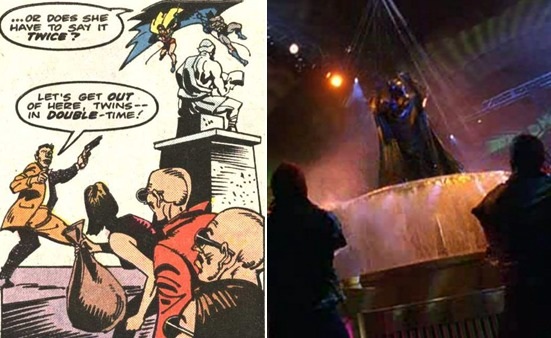
The movie sequence ends with Two-Face luring Batman into a trap and attempting to incinerate him. Batman uses his cape to protect himself from the flames. Batman’s cape in the comics is flame retardant, though not usually to the extent shown in the movie.
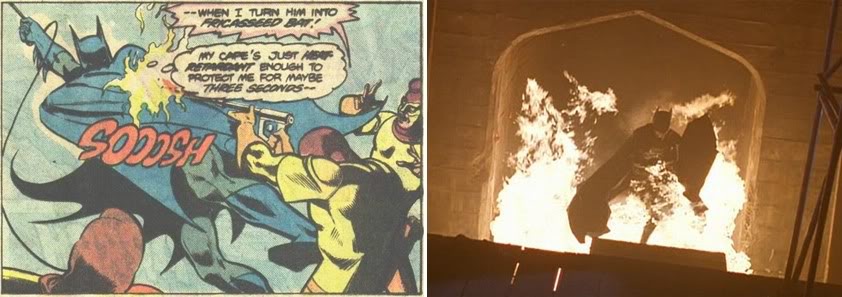
Having failed to burn him to death, Two-Face then tries burying him alive. In A Lonely Place of Dying (1989) – the follow-up to Batman: Year Three – there is a scene where Batman is buried beneath a mountain of rubble by Two-Face. By this point Batman is disillusioned by Jason Todd’s death and refuses to work with a sidekick. He’s therefore less than thrilled when Tim Drake shows up – wearing the Robin costume for the very first time – and rescues him from beneath the rubble.
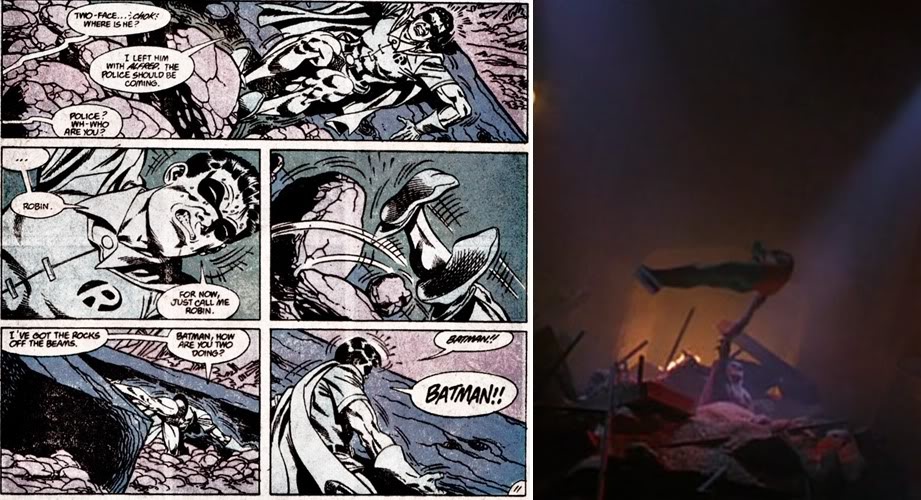
In the movie, Bruce and Dick argue about Batman’s need for a sidekick. Bruce doesn’t want to take on a partner, but Dick and Alfred think it’s a good idea. This echoes Tim Drake’s initiation in A Lonely Place of Dying. Bruce didn’t want to take on another Robin because of what happened to Jason Todd, but Tim and Alfred ultimately talked him around.
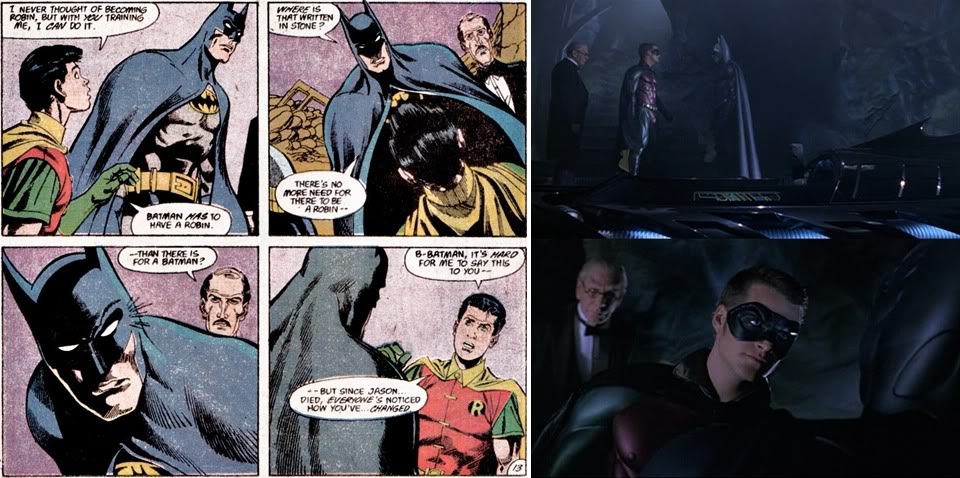
The attack on Wayne Manor may have been inspired by Bane’s attack in Knightfall Part One: Broken Bat (1993). In both stories we see a villain discover Batman’s secret identity, infiltrate Wayne Manor, knock Alfred unconscious, discover the secret entrance to the Batcave, trash the place and leave Bruce severely injured.
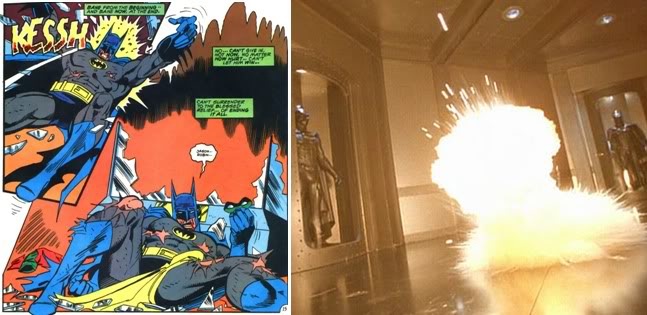
A common criticism of the characterisation of Two-Face in this movie is the way he repeatedly flips his coin until he gets the outcome he wants. Many viewers have pointed out that Two-Face is meant to accept the outcome of the coin toss whether he likes it or not. However, while this is true in the vast majority of comics, there have been exceptions. For example, look at this scene from ‘About Faces!’ (Batman #398, August 1986).
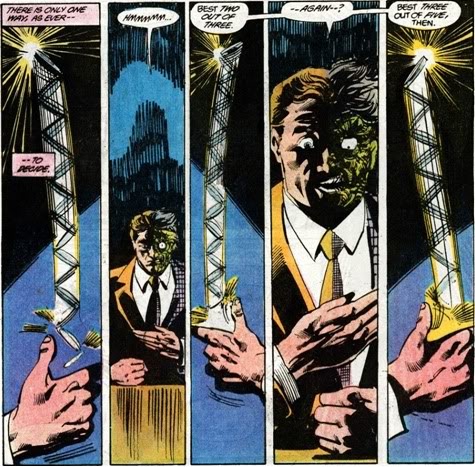
Later in the same story Two-Face clearly states that he can flip his coin as many times as he likes.
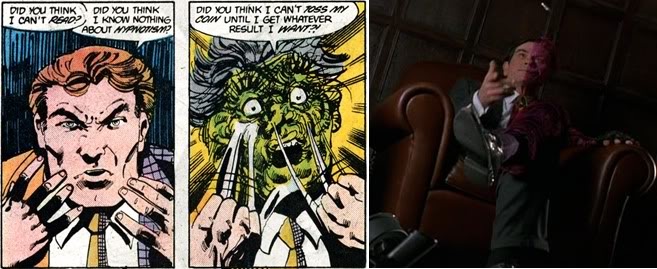
Batman recovers from the attack and deduces that Nygma and the Riddler are one in the same person. He then prepares for the final showdown, donning a special silver Batsuit with built-in sonar modifications. This costume may have been inspired by the sonar Batsuit from Batman versus Predator (1991).
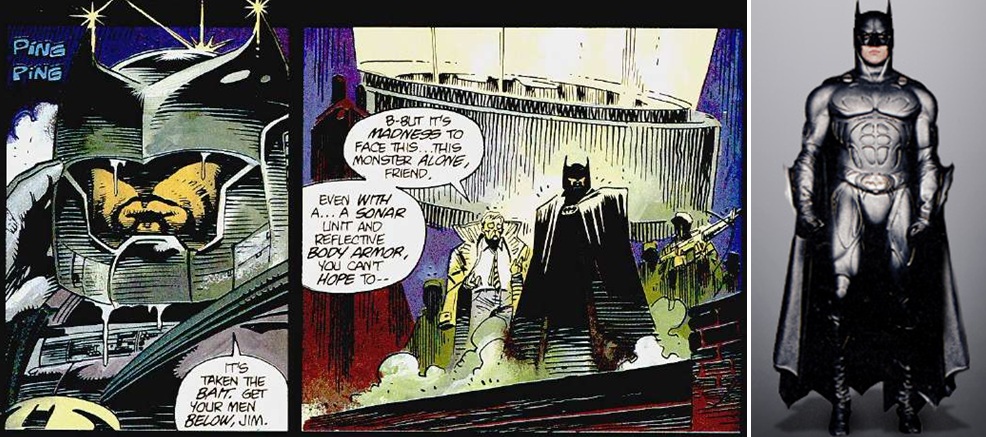
Finally Batman takes Robin on as his partner. Robin’s costume resembles the Tim Drake version that was contemporary at the time of the film’s release.
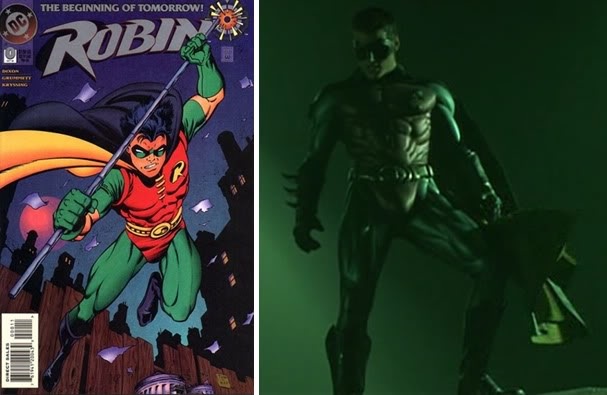
Batman and Robin then set off to take down Two-Face and Riddler. Robin takes the Batboat, which we see is moored at a subterranean river within the Batcave. The Batcave in the comics also has a river like this by which the Batboat is launched.

Robin has to eject from the boat when it’s destroyed by one of Two-Face’s mines. He then equips a miniature rebreather mask in order to breathe underwater. Batman and Robin have used similar devices in the comics on many occasions.
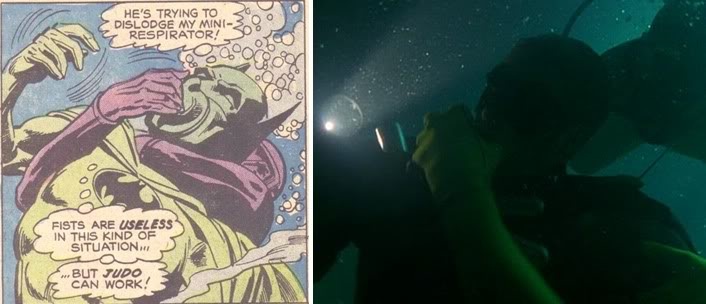
Meanwhile Batman is piloting the Batwing. But it gets shot down by the Riddler (a possible nod to the scene in the 1966 movie where the Riddler shoots down the Batcopter). Upon hitting the water, a section of the Batwing disengages itself from the wreckage and functions as a submarine. The second Batplane in the comics possessed the same transformative ability, as demonstrated in its debut story ‘The Birth of Batplane II!’ (Batman #61, October 1950). In this story the new Batplane is shot down by criminals. Upon hitting the water it immediately transforms into a submarine, just like in the movie. This Batplane also possessed an ejector system similar to the one seen in the film.
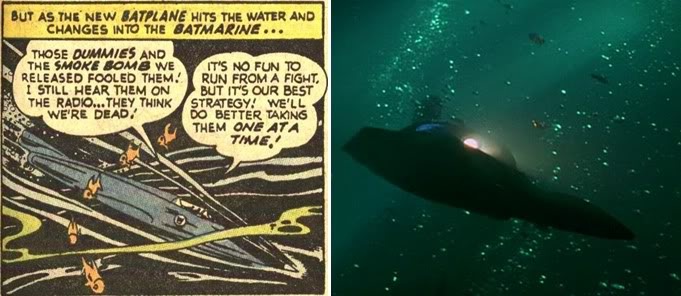
Batman and Robin make it to dry land, at which point the Boy Wonder exclaims "Holy rusted metal, Batman!" Robin’s "holy ------" catchphrase is mostly associated with the Burt Ward Robin from the sixties TV show. But the Dick Grayson Robin in the comics also used to say this a lot during the sixties.
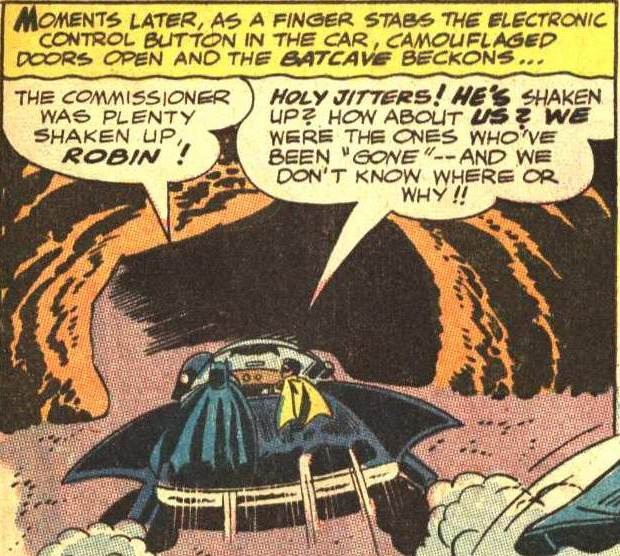
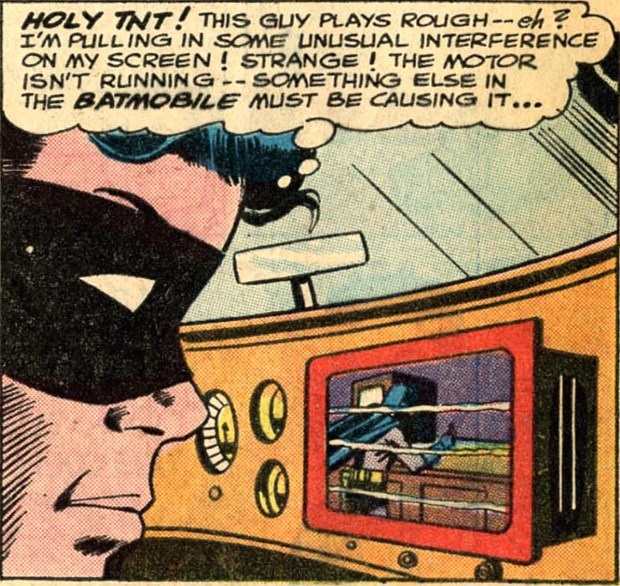
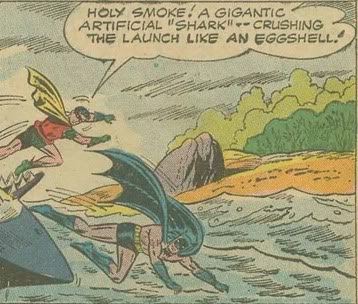
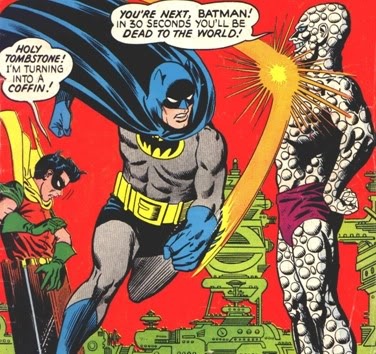
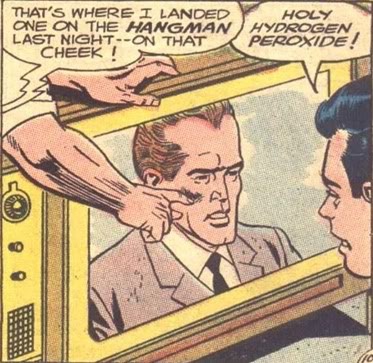
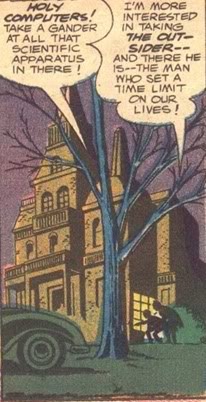
Batman and Robin are separated and the Boy Wonder finds himself facing off against Two-Face. When Tim Drake made his costumed debut in A Lonely Place of Dying, his first battle as Robin was also a one-on-one fight against Two-Face.
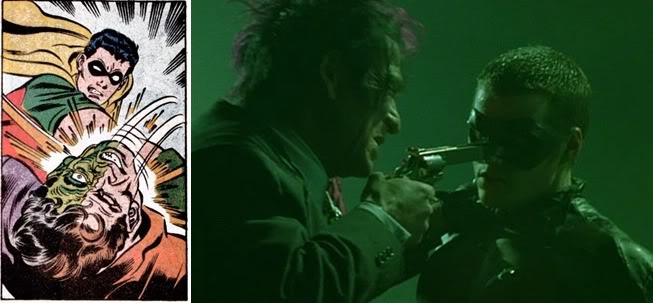
Elsewhere, Batman stumbles across a descending spike trap. He escapes by cutting through the device’s support chains using exhaust jets on his boots. The Dynamic Duo often used to wear jet skates back in the forties and fifties. These first appeared in ‘The Case of the Three Devils (Detective Comics #50, April 1941). Initially it was just Robin who wore them. But Batman soon got his own pair.

After rescuing Robin and Chase, Batman is confronted by Two-Face. Dent is about to kill them when Batman reminds him to flip his coin. The same thing happened in the aforementioned ‘Once Beaten, Twice Sly!’, where Two-Face had a perfect opportunity to kill Batman but hesitated when reminded that he hadn’t flipped his coin.
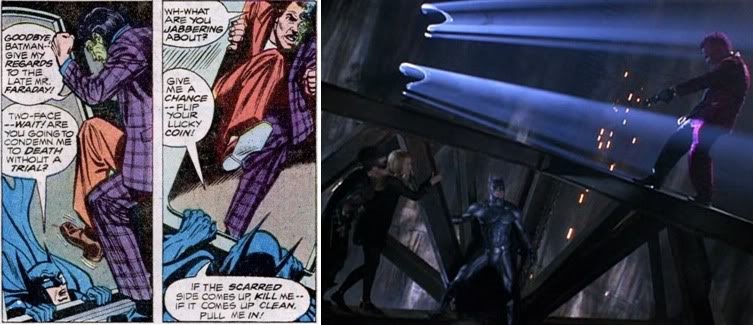
Two-Face then flipped the coin, only to have it shot in midair so that the bullet knocked it out of the hatchway. Terrified of losing the coin, Two-Face dived headfirst out of the hatch without a parachute, apparently plummeting to his doom.

A similar thing occurred in the 1989-1991 Batman newspaper strip. During the Two-Face storyline, Batman threw an identical coin into the air at the precise moment Two-Face flipped his.
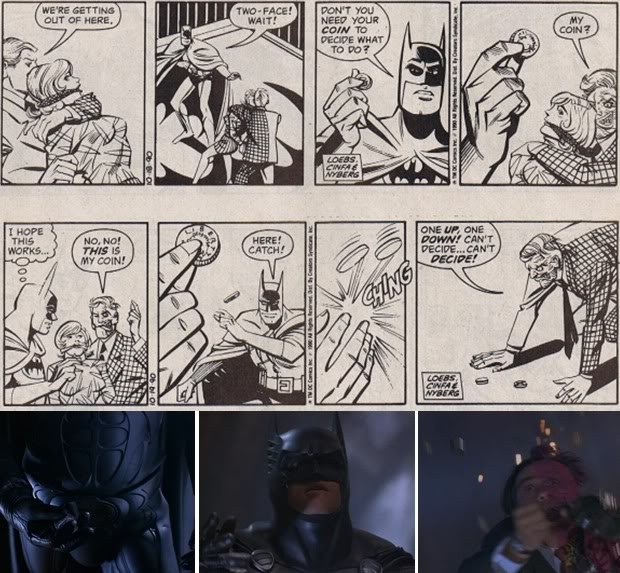
The scene at the end of the movie where the Riddler hallucinates that Batman is a real bat may have been inspired by an almost identical scene from 'A Clash of Symbols' (Detective Comics #617, July 1990). At the end of this story, the Joker sees Batman swinging towards him on a rope and momentarily thinks he sees a real bat-creature flying at him. Batman is then able to capitalise upon his enemy's terror and apprehend him.

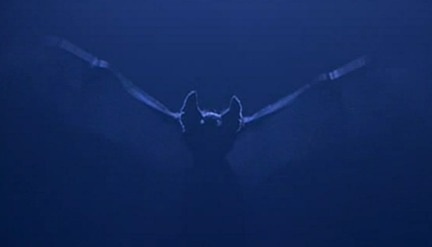
In 'Identity Crisis' (Detective Comics #633, August 1991), a psychic entity called the Synaptic Kid enters Batman's mind to find his true identity. Batman splits his mind into his two personas to protect himself and in doing so drives the villain crazy to the point where he believes himself to be Bruce Wayne. It ends with the villain in a coma and the doctor saying if he comes around he may never share his thoughts. The Synaptic Kid's head is grossly distended at the end of the story, similar to Nygma's head after his brain overloads.
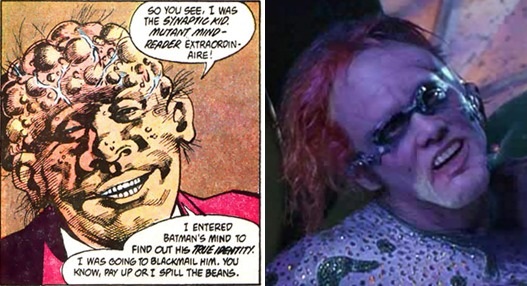
The final shot of the movie shows Batman and Robin running towards the camera with the Bat-Signal in the background. This image has shown up countless times over the years, one example being the cover of Detective Comics #561 (April 1986).
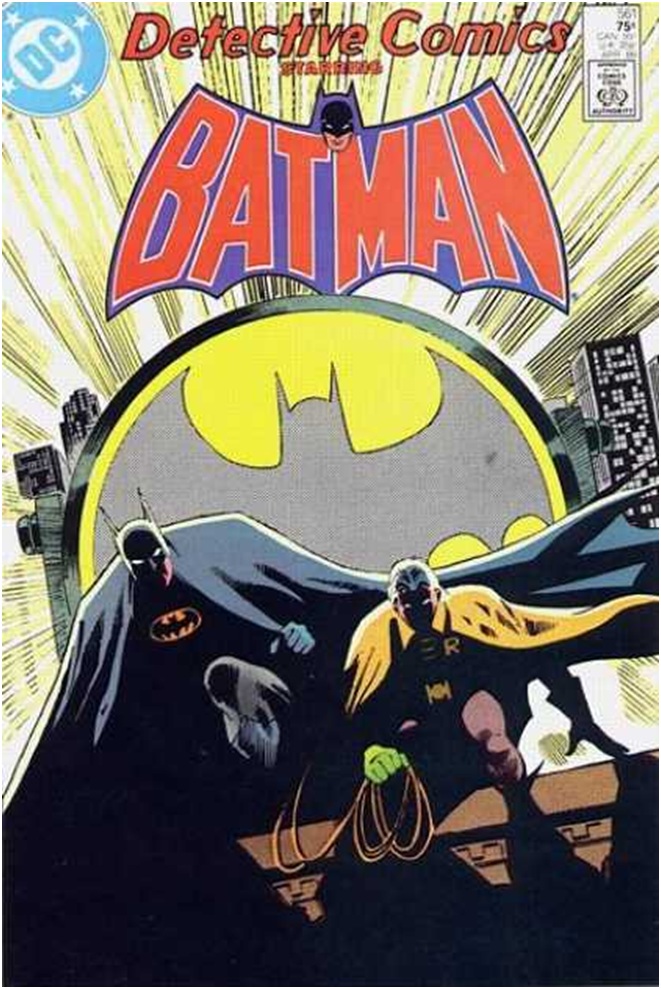
The final shot may also have been inspired by the animated intro to the sixties TV series.
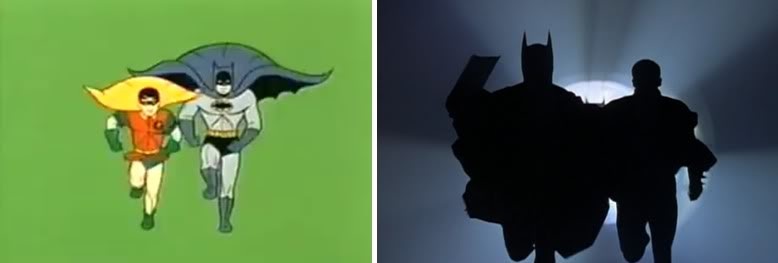
And that concludes this analysis of Batman Forever. Discuss it in the forum
comments powered by Disqus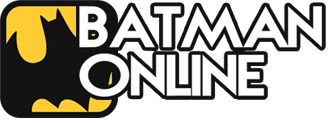
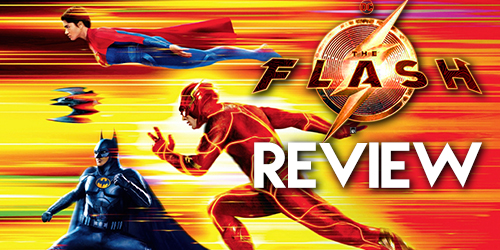
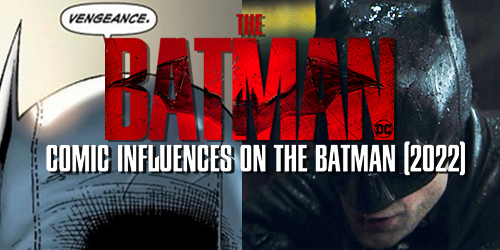
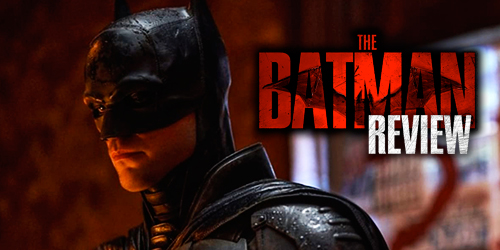

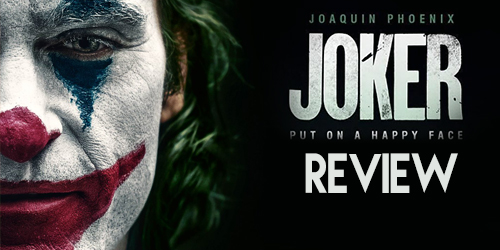
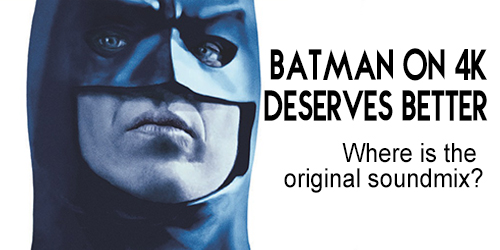
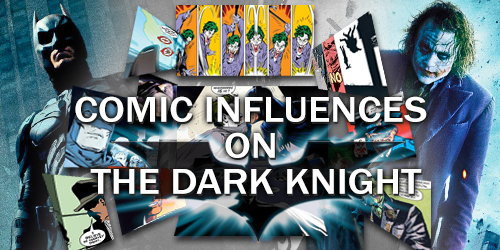

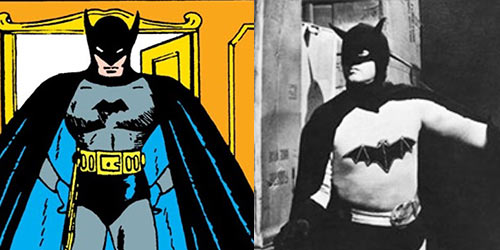
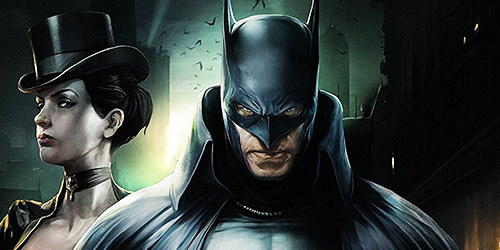
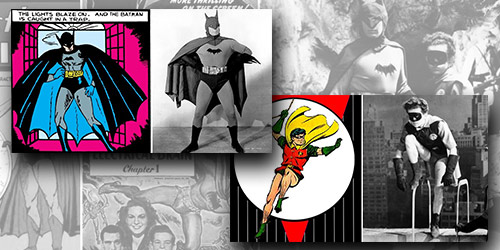
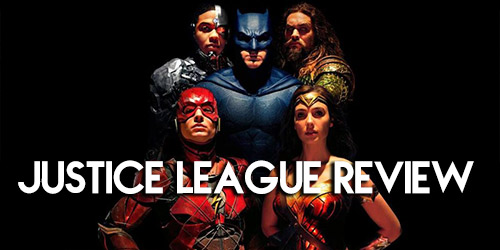
by The Joker
by The Joker
by GBglide
by The Dark Knight
by The Dark Knight
by Silver Nemesis
by The Laughing Fish
by The Laughing Fish
by The Laughing Fish
by The Laughing Fish